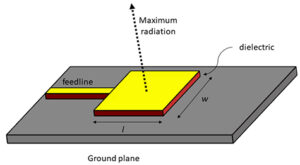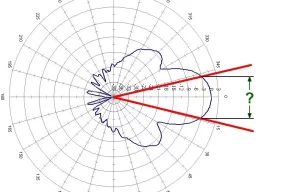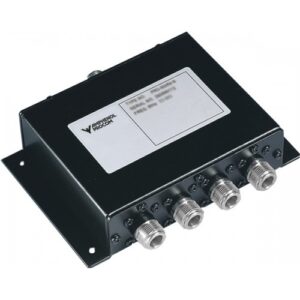Table of Contents
F-Type Connector
The F-Type connector is one of the widespread connectors in both residential and cable and satellite TV setups. The device’s popularity may be justified by its tech specs, as it supports “3 GHz frequency bandwidth, which is perfectly adequate for transporting high-definition signals.” As people currently consume vast amounts of content on their high-definition television – or HDTV – such utilization seems to be the primary source of the F-Type connector’s popularity. With regards to the practical uses, the connector is often used in households looking to improve their cable modem’s connection. In particular, the connector ensures that the cable is connected firmly and, as a result, the Internet is substantially faster and more stable. As households require better broadband connectivity now than ever, the average home can ensure a better Internet connection by inspecting every coaxial cable and ensuring all that connects to the house’s modem and router is tied with the F-Type connector.
The remarkable cost efficiency is among the device’s other valuable advantages. In particular, the F-Type connector is substantially cheaper than professional N-Type and SME coaxial connectors but displays very similar capabilities. This property allows the equipment to be used in large-scale installations that are constrained by the budget, as it demonstrates brilliant performance and costs less. The F-Type connector is also highly durable and easy to use, which results in the additional cost reduction concerned with the potential repair works.
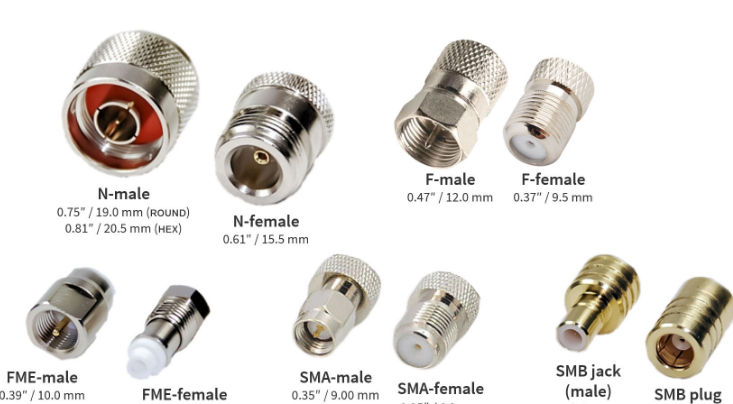
BNC Connector
The BNC Connector is an indispensable tool used in any kind of professional video and audio equipment. Its locking design with a bayonet mount ensures a stable connection; this feature is advantageous in particularly dynamic environments, such as broadcast studios or live events, where the equipment is frequently connected and disconnected, as BNCs make accidental disconnections impossible. One of the most important permeant uses of BNC connectors is in the setup of surveillance systems. Security cameras must be able to provide their watching parties with uninterrupted feeds, and the BNC connector is an invaluable tool, as without it the feeds would become distorted and unstable and may be ultimately disconnected due to the characteristic shifting of vantage points for each camera.
Another important aspect of the BNC connector when compared to other coaxial types is its ability to connect and disconnect relatively quickly. While the F-Type is interested with a threaded design, taking a crucial amount of greater time to manipulate, and in applications such as test equipment setup or when acting as a makeshift connector during an event this time may be essential and lead to major labor costs for a professional user.
Finally, many broadcast professionals prefer BNC connectors to others due to their ability to cope with both analog and digital video transmission. These connectors are usually capable of transmitting frequencies up to 4 GHz, which ensures compatibility with the most broadcast broadcast standards. Finally, in terms of durability, the BNC connectors are designed to be resistant to extensive connect-disconnect operations without significant loss of mechanical reliability or signal purity. This trait is essential in the broadcasting field, which largely relies on the model.
N-Type Connecto
The N type connector is an indispensable part of systems where a high degree of power and frequency is imperative. The connector is rated to work efficiently up to 11 GHz and accommodate up to 100 watts of power, making it suitable for applications that require high performance. One of the most important applications, for example, is cellular base stations. The stations require efficient and durable connections to handle the high power required for the coverage of wide areas with the signal.
The efficiency of the N type connectors and the capacity to support high power is thus critical for the continuous provision of mobile services over vast distances. Another important application is amateur radio. In this type of application, the major characteristic that makes the N type connector preferable to other types is that the latter are smaller and more susceptible to signal degradation. The N connects more firmly and reduces transmission losses. An additional point to take into account is that in relation to other types of connectors, such as SMA and TNC, the N connector has the competitive advantage of being better equipped to handle the power requirements.
While the SMA connectors are normally rated up to 18 GHz in frequency, their comparable power level is only about 30 watts, making the N type better suited to those applications that require both high power and high frequency. Finally, the fact that they are not adversely affected by vibration because they do not permit physical disruption of the center contact of the socket as connections are being made or unmade makes them mechanically rugged. The performance of the connectors facilitates higher power to be effectively transmitted across large distances. In addition, the connectors are extremely resistant to elements, an important quality for outdoor use, for example, for connecting antennas to the top of radio towers. The connectors are also ingrained with minimal signal reflection, and the systems do not require additional special tooling for assembly.
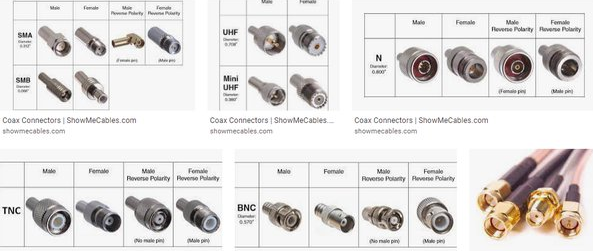
SMA Connector
The SMA connector, SubMiniature version A, is one of the most known products in the telecommunications and radio frequency industries. This type of connectors is developed to fit the highest frequency up to 18 GHz, which is mostly used in microwave systems, antennas, or mobile phone bases. Since these uses require precise and high-quality transmission, the connector should be both firm and compact. One example of the SMA connector application is WiFi equipment, wherein the case the antenna is connected with a router. If the SMA device is not used, the signal transmitted by WiFi is much lower as, in this case, it is instantly lost, which is harmful when both in a need to cover a wider area with the signal, and one from a transmitting spot. This is critical when speaking about routers that are put far away from mobile devices, and in this way, the router should provide the optimal signal in long distances.
It is also vital to assess the uses in measuring equipment that is also highly dependent on precise results and the characteristics of the naturally consistent signal, which is guaranteed by the SMA connector. Such equipment is used by engineers in the work process, and the SMA device has long been tested and valued as a connector that survives the repeated tests of connecting and disconnecting in machine models indispensable in the laboratory. The SMA connector is way beyond bigger and less so connecting devices, and one of them is the N-Type. N-Type is adapted for bulkier uses, mostly outdoor, and therefore it is often chosen as a device to operate in far less indoor uses. The look of both devices differ a lot, and the N-Type one, being durable and mostly stainless too as the SMA, is resistant to corrosion or physical wear from inner use.
TNC Connector
The TNC connector Threaded Neill-Concelman is very popular and durable type of connector. It is widely used in mobile communications and WiFi equipment. This is because TNC connector is a threaded modification of the BNC connector providing a more reliable, non-reflowable connection. Connection stability is important to mobile and other radio communications important. For example, radio equipments of police and emergency vehicle communication is used in vehicle radio equipment. The operational conditions of such equipment are not very friendly to connection. In the process of transport and unloading, instruments are subjected to constant vibration, disconnection of the antenna – cable connection often causes failure. That is why the TNC connector, which has the Front part of BNC, and Comb can be screwed onto the socket on an antenna or amplifier or other instrument and there will be no vibration, a reliable connection is used.
To compare the TNC connector with its counterpart, the BNC connector Injectable Neill-Concelman. The difference between the two connectors is the same as the TNC’s advantage over its counterpart. While the BNC connector is also suitable for frequent connect/get requests, the TNC connector has a threaded connection mechanism, not necessarily a relay, which is an ideal solution for vehicles that do not have smooth ride especially since in vehicles the vibration is large and a simple smooth connector would not do it folds.
Another use of the TNC connector is for base station antennas for cellular and wireless communications. Base stations are connected to a base station using TNC connectors and rely on them: that they do not wear out from the wind and rain the operating time of the base station equipment sometimes exceeds the time of manufacture of the TNC connector so the Telecommunications equipment companies are very happy with this solution. These connectors are very durable – their life span is comparable to that of the instrument. The signal losses are minimal due to the precision of the product and material quality. Connectors are typically made of brass with nickel plating. They do not corrode. These materials are resistant to extreme temperatures.
UHF Connector (PL-259/SO-239)
The UHF connector, which is technically the PL-259 and SO-239, is a standard connector in the world of amateur radio, CB radio, and marine VHF radio communications. Designed with an eye toward outdoor durability for applications that require a rugged connector capable of handling moderate frequencies up to 300 MHz with some degree of separation, the UHF connector is particularly suitable for high-power broadcasts in the HF (high frequency) and VHF (very high frequency) bands. In the world of amateur radio, which tends to value ease of repair and repairability more than might be strictly necessary for other applications, the UHF connector is particularly popular due to its “solder-on” installation. As several others in the thread have mentioned, this added advantage for amateur radio application extends also to emergency radio applications and militaries throughout the world.
There are a few main reasons that I have decided to explore the UHF connector in my research. One such reason is that I have a personal appreciation for amateur radio culture and practice, and the UHF connector is a blatant expression of both. Further, the mechanical durability and strength that the connector derives from its configuration make it instrumental in a wide variety of applications including outdoor and vehicle use, and EMT transmissions. Another, more specific application of the UHF connector is in marine radios, which benefit particularly from corrosion resistance and the robust mechanical strength of the connector in a maritime environment.
Comparing the UHF connector to the SMA or BNC, which a few other responders mentioned, I feel that the relative durability and hand-connection speed of the UHF are great advantages for outdoor or vehicle-based work. I would argue against the other responders and suggest that the SMA or BNC connections might be more fragile than the UHF, and could represent more of a concern for breakage, especially in constant outdoor use. These other two options might also have higher transmission properties at preset frequencies or lower setup complexity than the UHF, but in terms of actual outdoor use, the UHF ought to suffer less damage. Of course, the price point also favors the UHF, which certainly is not the least expensive option available but skimps on neither the quality nor the durability.

